Transformation of Graphs: A Comprehensive Guide with Worksheet
Transformation of Graphs
- Graphs are an essential tool in studying functions and their behaviour.
- Transforming the graph of a function involves changing its position or shape without changing the original function.
- These transformations are achieved through various rules that apply to specific functions.
In this article, we will discuss:
- Horizontal Shift: f(x + a) and f(x – a)
- Vertical Shift: f(x) + a and f(x) – a
- Vertical Stretching/Shrinking: af(x) and 1/a f(x)
- Horizontal Stretching/Shrinking: f(ax) and f(x/a)
- Reflection: -f(x) and f(-x)
Here is one more link to practice a few extra questions: Maths Genie Transformation of Graphs Questions
Horizontal Shift: f(x + a) and f(x - a)
When we shift a graph horizontally, we move it left or right along the x-axis.
The function graph transformation rules for horizontal shifts are as follows:
- f(x + a) shifts the graph of f(x) left by a units
- f(x – a) shifts the graph of f(x) right by a units
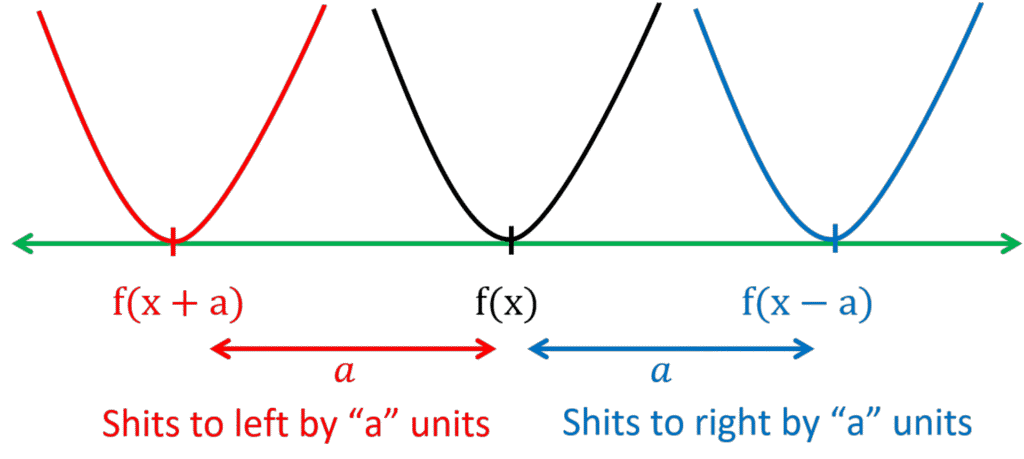
Solved Example:
Consider the graph of the function f(x) = x².
If we apply the transformation rule f(x + 2), the new graph will shift two units to the left, resulting in the graph of the function f(x + 2) = (x + 2)².
Vertical Shift: f(x) + a and f(x) - a
- A vertical shift moves the graph up or down along the y-axis.
- f(x) + a vertically shifts the graph of f(x) upward by a units
- f(x) – a vertically shifts the graph of f(x) downwards by a units
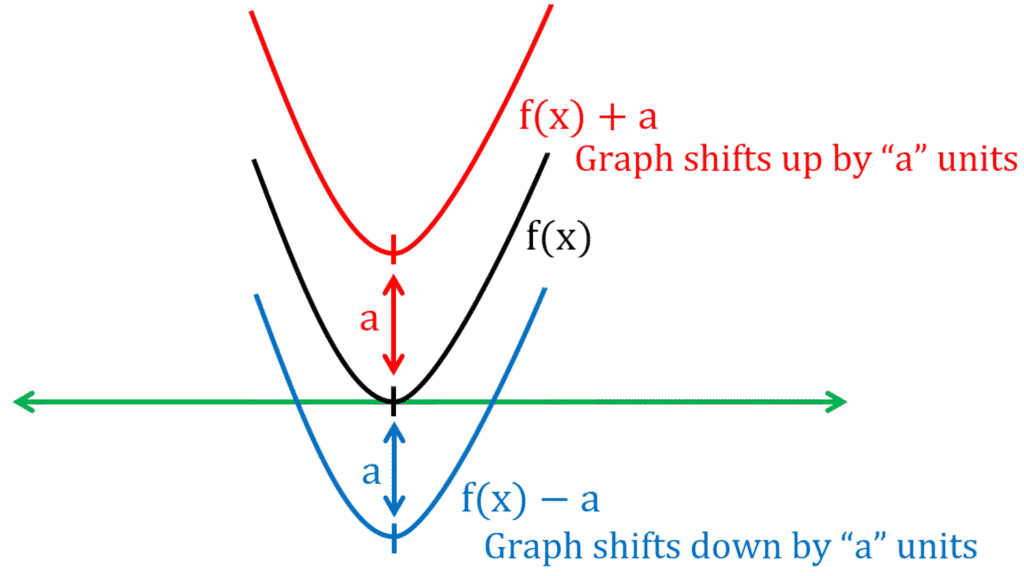
Solved Example:
Let’s say we have the graph of the function f(x) = x³.
If we apply the transformation rule f(x) + 4, the new graph will shift four units up, resulting in the graph of the function f(x) + 4 = x³ + 4.
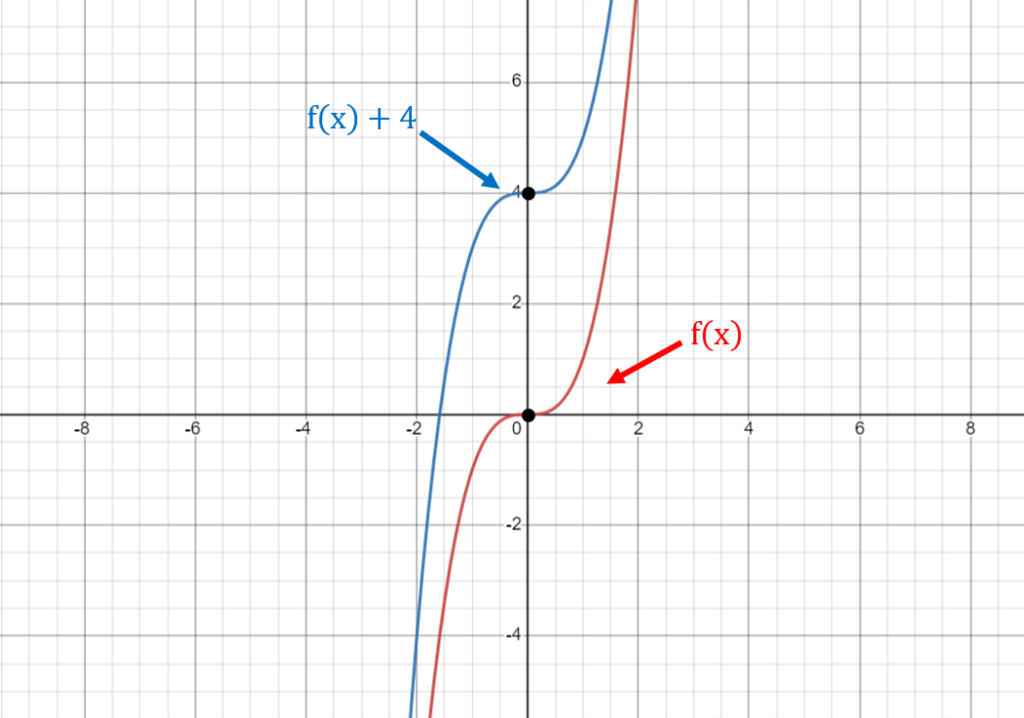
Vertical Stretching/Shrinking: af(x) and 1/a f(x)
Vertical stretching or shrinking of a graph changes the height of the graph.
The function graph transformation rules for vertical stretching/shrinking are as follows:
- af(x) vertically stretches the graph of f(x) by a factor of a units
- 1/a f(x) vertically shrinks the graph of f(x) by a factor of a units
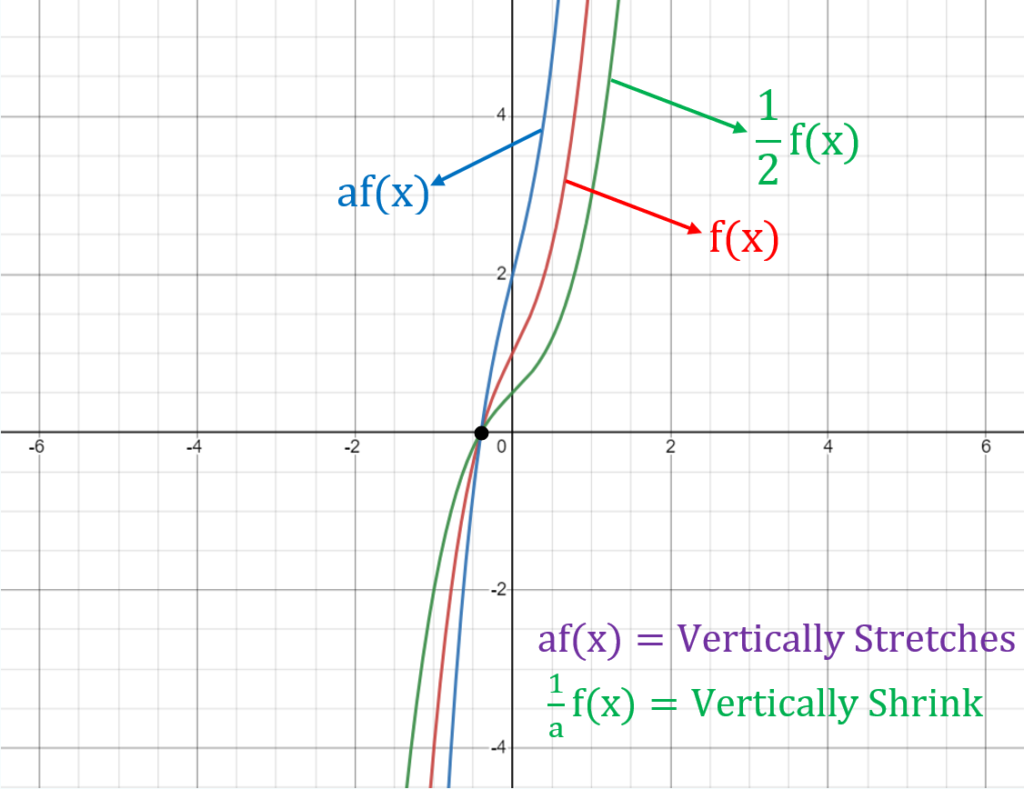
Solved Example: Transformation of Graphs
Let’s consider the graph of the function f(x) = x².
If we apply the transformation rule 2f(x), the new graph will stretch vertically by a factor of 2, resulting in the graph of the function 2f(x) = 2x².
If we apply the transformation rule f(x)/2, the new graph will shrink vertically by a factor of 2, resulting in the graph of the function f(x)/2 = (1/2)x².
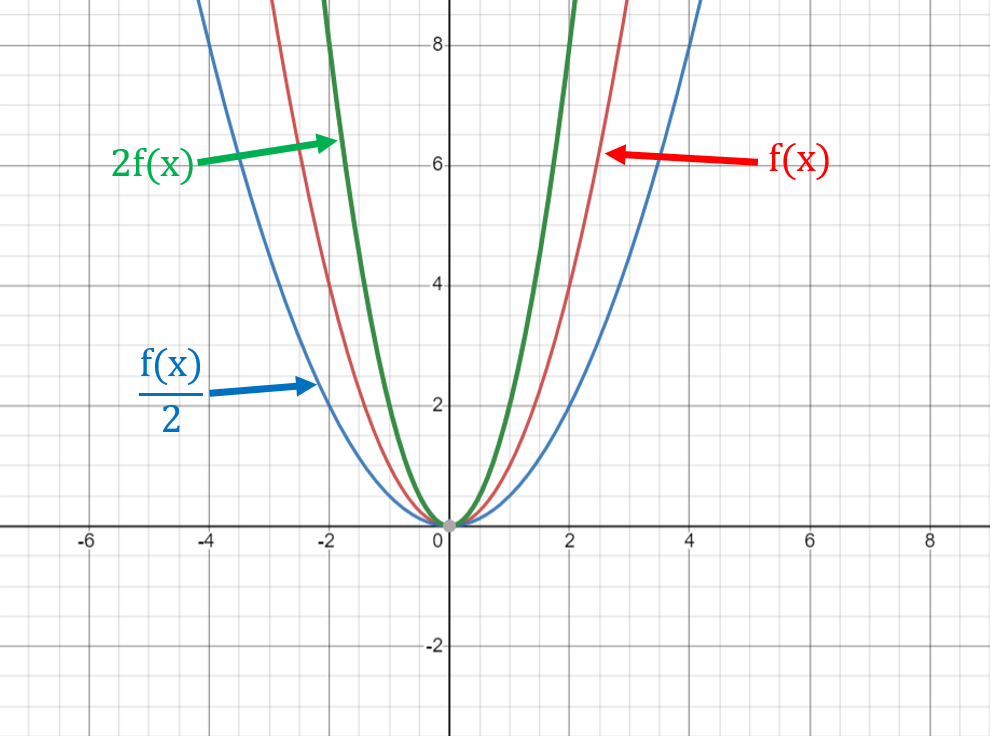
Horizontal Stretching/Shrinking: f(ax) and f(x/a)
Horizontal stretching or shrinking of a graph changes the width of the graph.
The function graph transformation rules for horizontal stretching/shrinking are as follows:
- f(ax) horizontally shrinks the graph of f(x) by a factor of a units
- f(x/a) horizontally stretches the graph of f(x) by a factor of a units

Solved Example: Transformation of Graphs
Let’s say we have the graph of the function f(x) = cos(x).
If we apply the transformation rule f(2x), the new graph will shrink horizontally by a factor of 2, resulting in the graph of the function f(2x) = cos(2x).
If we apply the transformation rule f(x/2), the new graph will stretch horizontally by a factor of 2, resulting in the graph of the function f(x/2) = cos(x/2).
Reflection: -f(x) and f(-x)
Reflections of a graph involve flipping the graph across the x or y-axis.
The function graph transformation rules for reflections are:
- Reflection across the x-axis: replace f(x) with -f(x) which reflects the graph of f(x) across the x-axis.
- Reflection across the y-axis: replace x with -x in f(x) which reflects the graph of f(x) across the y-axis.
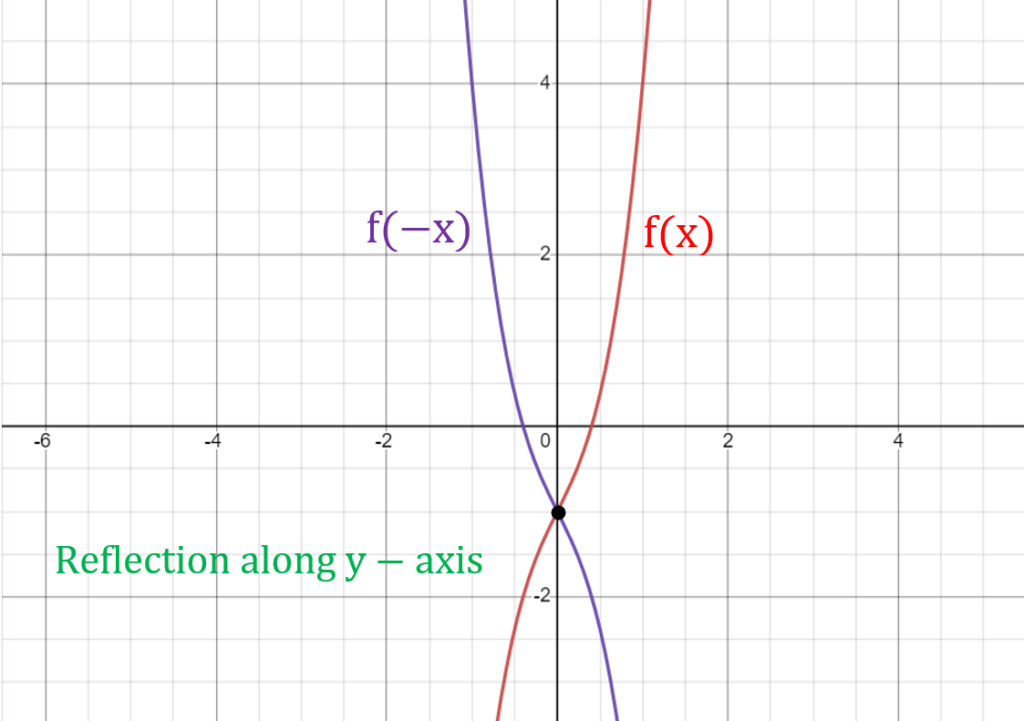
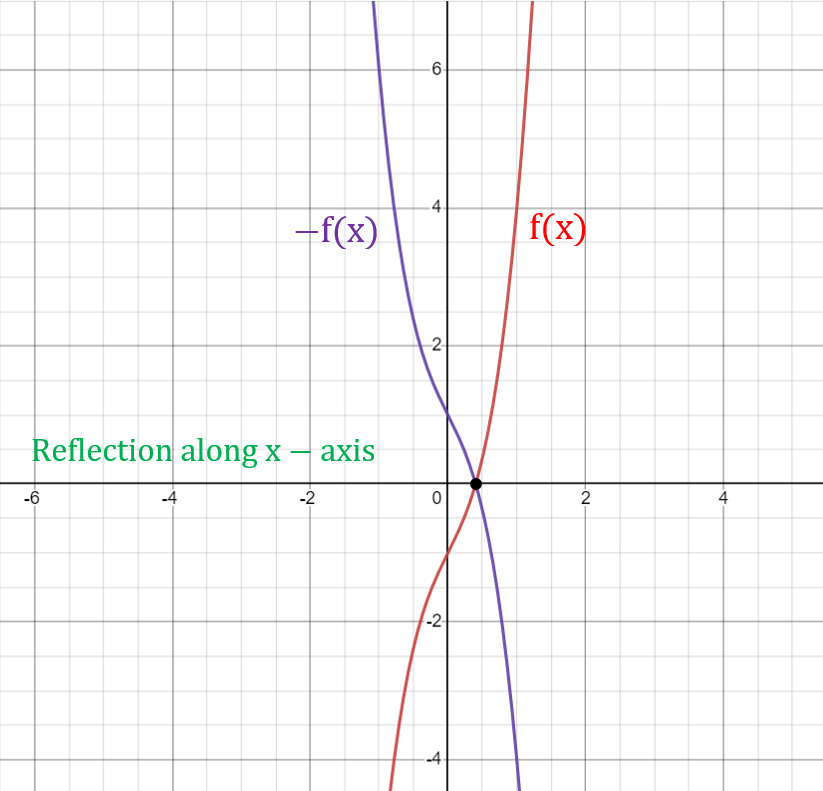
Solved Example: Transformation of Graphs
Consider the function f(x) = x2. Here are some examples of its transformations:
- f(x + 2) shifts the graph left by 2 units.
- f(x – 3) shifts the graph right by 3 units.
- f(x) + 4 shifts the graph upwards by 4 units.
- f(x) – 1 shifts the graph downwards by 1 unit.
- 2f(x) vertically stretches the graph by a factor of 2.
- 1/3f(x) vertically shrinks the graph by a factor of 3.
- f(2x) horizontally shrinks the graph by a factor of 2.
- f(1/2x) horizontally stretches the graph by a factor of 2.
- -f(x) reflects the graph over the x-axis.
- f(-x) reflects the graph over the y-axis.
- Note that you can apply multiple transformations to a single function.
- For example, f(2x – 3) represents a horizontal shrink by a factor of 2 and a horizontal shift right by 3 units.
Conclusion
- In conclusion, understanding the rules of function graph transformation is crucial for graphing and analysing functions.
- You can easily recognize and apply these transformations to any given function with practice and understanding.
Practice Questions: Transformation of Graphs
f(x) = x3
g(x) = (x – 3)3 + 3
Question 4: Describe the transformations necessary to transform the graph of f (x) into that of g(x).f(x) = x3
g(x) = (x + 1)3 + 2
Question 5: Describe the transformations necessary to transform the graph of f (x) into that of g(x).f(x) = x2
g(x) = (x + 3)3 – 2
Question 6: Describe the transformations necessary to transform the graph of f (x) into that of g(x).f(x) = x3
g(x) = -(x – 2)3
Question 7: Describe the transformations necessary to transform the graph of f (x) into that of g(x).f(x) = x2
g(x) = (x + 1)2 – 3
Question 8: Describe the transformations necessary to transform the graph of f (x) into that of g(x).f(x) = 1/x
g(x) = 3/x – 3
Question 9: Describe the transformations necessary to transform the graph of f (x) into that of g(x).f(x) = x2
g(x) = -x2 + 2
Question 10: Transform the given function f (x) as described and write the resulting function as an equationf(x) = x3
reflect across the x-axis
translate up 2 units
Solutions:
Question 1: Consider the function f(x) = x2. Describe the transformation that occurs when f(x) is replaced by f(x + 3).
Solution:
The transformation f(x + 3) represents a horizontal shift of the graph of f(x) to the left by 3 units.

Question 2: Consider the function g(x) = x3. Describe the transformation that occurs when g(x) is replaced by g(x – 2).
Solution:
The transformation f(x + 3) represents a horizontal shift of the graph of f(x) to the left by 3 units.
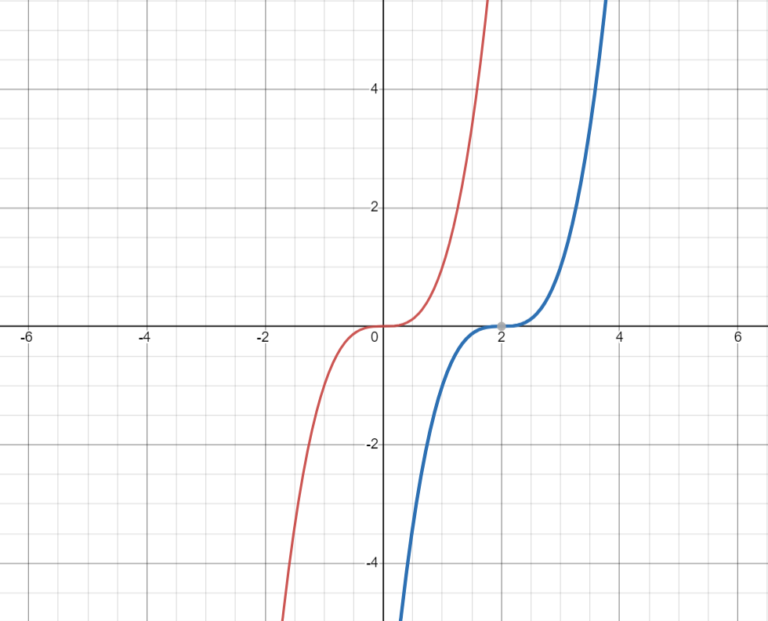
f(x)=x3
g(x)=(x-3)3+3
Solution:translate right 3 units translate up 3 units
Question 4:Describe the transformations necessary to transform the graph of f (x) into that of g(x).f(x)=x3
g(x)=(x+1)3+2
Solution:translate left 1 unit translate up 2 units
Question 5:Describe the transformations necessary to transform the graph of f (x) into that of g(x).f(x)=x2
g(x)=(x+3)3-2
Solution:translate left 3 units translate down 2 units
Question 6:Describe the transformations necessary to transform the graph of f (x) into that of g(x).f(x)=x3
g(x)=-(x-2)3
Solution:reflect across the x-axis translate right 2 units
Question 7: Describe the transformations necessary to transform the graph of f (x) into that of g(x).f(x)=x2
g(x)=(x+1)2-3
Solution:translate left 1 unit translate down 3 units
Question 8:Describe the transformations necessary to transform the graph of f (x) into that of g(x).f(x)=1/x
g(x)=3/x – 3
Solution:expand vertically by a factor of 3 translate down 3 units
Question 9: Describe the transformations necessary to transform the graph of f (x) into that of g(x).f(x)=x2
g(x)=-x2+2
Solution:reflect across the x-axis translate up 2 units
Question 10:Transform the given function f (x) as described and write the resulting function as an equationf(x)=x3
reflect across the x-axis
translate up 2 units
Solution:g(x)=-x3 + 2

